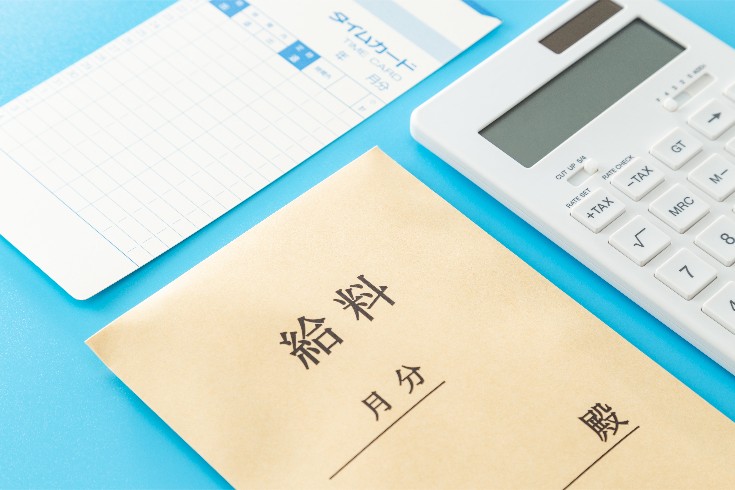Business Transfer under Japanese Corporate Law: A Comprehensive Explanation of Definitions, Procedures, and Legal Risks

Business transfers represent one of the most crucial and flexible strategic options in Japanese M&A (mergers and acquisitions) practices. This refers to a transaction where a company sells all or part of its business to another company. The greatest feature of business transfers is the ability to select the assets, liabilities, and contractual relationships to be transferred based on an agreement between the parties. This ‘freedom of choice’ enables companies to divest unprofitable segments and concentrate management resources on their core business, or allows the acquiring side to obtain only the necessary business while avoiding risks such as contingent liabilities. However, this strategic convenience comes hand in hand with the complexity of legal procedures. Since rights and obligations are not automatically inherited in a comprehensive manner, it is necessary to comply with individual procedures stipulated by the Japanese Companies Act and the Japanese Civil Code for transferring each asset and contract. The complexity of these procedures poses a significant challenge when considering business transfers. This article provides a comprehensive explanation of the legal knowledge essential for company executives and legal affairs personnel to properly understand and execute business transfers under the Japanese legal system, based on specific laws and case law. We will start with the legal definition of business transfers, cover approval procedures at the shareholders’ meeting, practical aspects of transferring assets, liabilities, and employees, and clarify the entire picture up to the legal obligations and risks that may arise after the transfer.
The Definition and Legal Nature of Business Transfers Under Japanese Law
The first step in understanding business transfers is to accurately grasp the definition of ‘business’ as the legal foundation and the concept of ‘specific succession’ as the method of transferring rights and obligations. These are the fundamental elements that define both the strategic advantages and procedural challenges of business transfers.
Definition of ‘Business’: Functioning Assets as an Organic Whole
Japanese Corporate Law does not provide a clear statutory definition of ‘business.’ Consequently, this concept has been shaped through court precedents. The definition provided by the Supreme Court of Japan in its decision on September 22, 1965 (Showa 40), has become the leading interpretation today. According to this decision, a ‘business’ is defined as ‘property organized for a certain business purpose and functioning as an organic whole.’ This does not merely refer to a collection of individual tangible assets such as factories, equipment, and inventory. Rather, it encompasses intangible assets and human elements such as relationships with customers, contracts with business partners, technical know-how, and the employees who operate them, all of which together fulfill a single economic function. Therefore, a business transfer is an act that transfers these functional properties as a whole, legally distinguished from a mere piecemeal sale of assets.
Legal Nature of ‘Specific Succession’: The Principle of Individual Transfer of Rights and Obligations
The most important concept personalityizing the legal nature of business transfers is ‘specific succession.’ This means that the individual assets, liabilities, contractual statuses, and labor contracts that constitute a business do not automatically transfer to the acquiring company (buyer) simply by concluding a business transfer agreement. In contrast, ‘universal succession’ involves the comprehensive transfer of rights and obligations, fundamentally different from specific succession. In business transfers that are specific successions, it is necessary to go through individual transfer procedures for each right and obligation to be transferred, according to their nature. For example, transferring ownership of real estate requires registration at the Legal Affairs Bureau, notifying the debtor is necessary to enforce claims against third parties, and transferring debt requires the consent of the creditor.
The principle of specific succession simultaneously creates two aspects of business transfers. On one hand, it offers a significant strategic advantage by allowing the parties to freely select the assets and liabilities to be transferred. The acquiring company can acquire only the desirable business divisions and avoid inheriting unwanted elements such as off-balance-sheet liabilities and litigation risks held by the transferring company (seller). On the other hand, this principle imposes a significant procedural burden. It is necessary to obtain individual consent from each related third party, such as business partners, employees, and creditors, which can cause delays and complications in the transaction. Therefore, companies planning business transfers must weigh the strategic value of this selectivity against the time and management costs associated with individual transfers and make a careful decision.
Key Procedures in Business Transfers and Shareholder Rights Under Japanese Corporate Law
Business transfers can significantly impact a company’s management foundation, so Japanese corporate law has established strict procedures that cannot be executed solely at the discretion of management. These procedures aim to balance maintaining managerial agility with protecting shareholder interests.
Board of Directors Resolution and Special Resolution at the Shareholders’ Meeting
The process of a business transfer typically begins with resolutions by the board of directors at both the transferring and receiving companies. The board of directors approves the conclusion of the business transfer agreement. However, approval by the board of directors alone is insufficient. As a principle, the business transfer agreement must be approved by a ‘special resolution’ at the shareholders’ meeting. According to Article 309, Paragraph 2 of the Japanese Companies Act, for a special resolution to be adopted, shareholders with a majority of the voting rights must be present, and at least two-thirds of the voting rights of the attending shareholders must approve. This high approval requirement reflects the significant impact that a business transfer can have on the company’s continuity and the interests of its shareholders. A business transfer without this shareholders’ meeting resolution risks being legally invalid.
Cases Where a Shareholders’ Meeting Resolution Is and Is Not Required
Not all business transfers require a special resolution at the shareholders’ meeting. Japanese corporate law stipulates the necessity of procedures according to the significance of the transaction.
Based on Article 467 of the Japanese Companies Act, a special resolution is generally required in the following cases:
- When the transferring company is transferring all of its business.
- When the transferring company is transferring a ‘significant part’ of its business. What constitutes ‘significant’ is primarily determined by quantitative criteria, such as when the book value of the assets being transferred exceeds one-fifth of the total assets of the company. However, qualitative aspects such as sales and brand image may also be considered.
- When the receiving company is taking over the entirety of another company’s business.
On the other hand, Article 468 of the Japanese Companies Act provides exceptions to simplify procedures.
- Simplified business transfer: If the value of the assets being transferred by the transferring company is less than one-fifth of the total assets (‘not a significant part’), a shareholders’ meeting resolution is not required. Similarly, for the receiving company, if the amount of consideration to be paid is less than one-fifth of the net asset value, the resolution can be omitted.
- Summary business transfer: If there is a special controlling relationship between the transferring and receiving companies, where one company holds more than 90% of the voting rights of the other company, it is possible to omit the shareholders’ meeting of the subsidiary (the controlled company).
These provisions are designed to seek shareholder consent for transactions that are crucial to the management’s core, while rationalizing procedures for transactions with relatively minor impact on the company or transactions between parent and subsidiary companies where the shareholders’ intent is effectively clear, thus not compromising management efficiency.
Dissenting Shareholders’ Right to Demand Purchase of Shares
Even if a majority of shareholders agree to a business transfer, there is a system in place to protect the interests of dissenting minority shareholders. This is the ‘right to demand the purchase of shares.’ Article 469 of the Japanese Companies Act grants dissenting shareholders the right to demand that the company buy back their shares at a ‘fair price.’ This right can be exercised by shareholders who have notified the company of their opposition prior to the shareholders’ meeting and who actually cast dissenting votes at the meeting. The company is obligated to notify shareholders at least 20 days before the effective date of the business transfer, providing them with the opportunity to exercise their rights. This system offers a rational exit for shareholders who do not wish for a fundamental change in the company’s policy, allowing them to recover their investment. However, this right to demand the purchase of shares is not recognized in the case of simplified business transfers, which are deemed to have a minor impact on the company.
Practical Aspects of Transferring Assets, Liabilities, and Contracts
Following the completion of the approval process for a business transfer, the next step involves the practical work of legally transferring each component of the business from the selling company to the buying company. This process must be carried out with caution, adhering to the principle of specific succession and in accordance with various legal provisions, including the Japanese Civil Code (民法).
Transfer of Assets and Liabilities Under Japanese Law
The transfer of assets and liabilities requires different legal procedures. For assets, it is crucial to fulfill the requirements (opposability requirements) to assert rights against third parties. For example, the transfer of ownership of real estate occurs through the expression of intent between parties under the Japanese Civil Code (Article 176), but to assert this right against third parties, it is necessary to register the transfer of ownership at the Legal Affairs Bureau in accordance with the Japanese Real Estate Registration Law. When transferring claims such as accounts receivable to customers, notification to the debtor (customer) or consent from the debtor is required under the Japanese Civil Code (Article 467). In particular, to assert the effect of the transfer against third parties, such as other creditors, it is required to perform this notification through a ‘document with a certified date,’ such as content-certified mail.
On the other hand, the transfer of liabilities, or “assumption of debt,” is subject to more stringent requirements to protect the interests of creditors. To perform an “exculpatory assumption of debt,” where the transferring company passes on the debt it owed to the assuming company and is completely relieved of its responsibility, the consent of the creditor must always be obtained. This is an important provision to prevent creditors from suffering the disadvantage of being unilaterally changed to a new debtor with insufficient financial resources.
Contractual Positions and Employee Transfers
Business operations are supported by numerous contractual relationships, such as supply agreements with suppliers, sales contracts with customers, and real estate lease agreements. The contractual position of the transferring company as a party to these contracts does not automatically transfer to the acquiring company. Article 539-2 of the amended Japanese Civil Code (2020) explicitly requires the consent of the other contracting party for the transfer of contractual positions. Therefore, the transferring and acquiring companies must negotiate with each contracting party to secure consent for the acquiring company to become a party to the contract.
The transfer of employment contracts with employees is one of the areas that requires the most careful handling in a business transfer. Employment contracts are based on a highly personal relationship of trust between the employer and the employee. Consequently, under the spirit of Article 625 of the Japanese Civil Code, an employer cannot transfer their position as an employer to a third party without the individual consent of the worker. The ‘transfer of registration’ of employees from the transferring company to the acquiring company requires the clear consent of each affected employee. Managers must carefully explain the new employment conditions at the acquiring company, such as salary, working hours, and benefits, and obtain the understanding and agreement of the employees. This consent is usually confirmed in writing, such as through a ‘transfer of registration consent form.’ If an employee refuses the transfer, the company cannot unilaterally terminate them on this basis and must consider alternatives such as reassignment to a different division within the transferring company.
Overview of Transfer Procedures
The table below summarizes the necessary procedures and their legal bases for the transfer of key rights and obligations in a business transfer.
| Subject | Key Procedures Required for Transfer | Legal Basis, etc. |
| Real Estate | Registration of Ownership Transfer | Japanese Civil Code, Japanese Real Estate Registration Law |
| Claims | Notification to or Consent from the Debtor (with a document bearing a definitive date) | Article 467 of the Japanese Civil Code |
| Contractual Position | Consent from the Contractual Counterparty | Article 539-2 of the Japanese Civil Code |
| Debts | Consent from the Creditor (in the case of an assumptive debt acceptance) | Japanese Civil Code |
| Employees’ Labor Contracts | Individual Consent from Employees | Article 625 of the Japanese Civil Code |
Post-Transaction Legal Obligations and Risks After Business Transfer in Japan
Even after the completion of a business transfer transaction, both the transferring and the receiving companies bear certain legal obligations and risks under Japanese law. Understanding these post-transaction legal relationships is essential to avoid unforeseen disputes and to ensure the success of the transaction.
Non-Competition Obligations of the Transferor Company Under Japanese Corporate Law
Under Japanese Corporate Law, a transferor company is restricted from engaging in the same business as the one it has transferred for a certain period and within a certain area after the transfer. This is known as the “non-competition obligation,” and it is stipulated in Article 21 of the Japanese Companies Act. The purpose of this provision is to protect the interests of the transferee company, which has acquired the business value (goodwill) as part of the consideration. Unless there is a separate agreement between the parties, the transferor company cannot engage in the same business within the same municipality or adjacent municipalities for 20 years from the date of transfer. This obligation can be modified in the business transfer agreement to shorten the period or eliminate it entirely. Conversely, it can be extended up to a maximum of 30 years by special agreement.
It is important to note that even if the contract excludes this obligation, under paragraph 3 of the same article, the transferor company is always prohibited from engaging in the same business with the “purpose of unfair competition.” In case law, the presence or absence of this “purpose of unfair competition” is often a point of contention. For example, in cases where the transferor company, after transferring the business, sold products under a name very similar to that used in the transferred business, or launched a competing website using the customer list from the transferred website and engaged in business activities, the courts have recognized the purpose of unfair competition and have ordered injunctions and damages.
Responsibilities of the Successor Company: Provisions for Creditor Protection Under Japanese Corporate Law
In business transfers, the successor company is not, in principle, liable for the debts of the transferor company that are not part of the transfer. However, to protect the creditors of the transferor company, Japanese Corporate Law sets important exceptions.
The first is “liability when continuing the use of the trade name.” According to Article 22 of the Japanese Corporate Law, if the successor company continues to use the trade name of the transferor company, it will also be liable for the debts incurred by the transferor company’s business. This provision is designed to protect external creditors who may not recognize the change in business ownership and continue to trust that the same business entity is operating. The successor company can avoid this liability by registering a disclaimer of succession (exemption registration). It is important to note that this liability applies not only to the officially registered trade name but also to widely recognized business names, and in some cases, logos or brands (trademarks) that symbolize the business, which courts have applied by analogy. The Supreme Court decision on February 20, 2004 (Heisei 16), recognized this liability in the case of the continued use of a golf club’s name, and recent lower court decisions have made similar judgments regarding the continued use of trademarks that signify the business entity. This suggests that the successor company may not be able to escape liability by merely making a formal name change, indicating the need for close coordination between brand strategy and legal strategy.
The second is “liability in the case of fraudulent business transfers.” This system regulates so-called asset-stripping business transfers, where the transferor company transfers only its valuable business assets to the successor company, knowing that it will harm creditors, leaving itself in a state of insolvency. Article 23-2 of the Japanese Corporate Law, introduced in the 2014 (Heisei 26) amendment, allows the remaining creditors of the transferor company to demand performance of the debt from the successor company, up to the value of the assets received, under certain conditions. For this claim to be recognized, it is necessary that the transferor company knew it was harming the remaining creditors by the transfer, and the successor company also knew this fact (or was not grossly negligent in not knowing). According to case law, even if the consideration for the business transfer is reasonable, if there is an intention to harm creditors, such as isolating assets from specific creditors, this provision may apply.
Summary
In this article, we have provided a detailed explanation of the legal framework and practical key points regarding business transfers under Japanese Corporate Law. We clarified that the legal nature of a business transfer as a “specific succession” combines strategic flexibility in selecting the transfer targets with the procedural complexity of having to individually transfer rights and obligations. Japanese Corporate Law seeks to balance management decision-making and shareholder rights protection by stipulating special resolutions at shareholders’ meetings for significant transactions and the right of dissenting shareholders to demand the purchase of their shares. On the practical side, obtaining individual consent for the transfer of assets, liabilities, contracts, and especially employment contracts based on Japanese Civil Law is extremely important. Furthermore, after the transfer, legal considerations to avoid unforeseen risks, such as the transferor company’s non-compete obligations and the transferee company’s liability when continuing the use of the trade name or in cases of fraudulent transfer, are essential. While business transfers can be a powerful tool in corporate growth strategies and business reorganization, their success hinges on a deep understanding of these legal aspects and careful planning based on specialized knowledge.
Monolith Law Office has a proven track record of providing legal services related to business transfers to a diverse range of clients within Japan. Our firm employs several English-speaking attorneys with foreign legal qualifications, enabling us to accurately explain and support the complex provisions of Japanese Corporate Law and Civil Law within an international business context. From initial strategy planning to due diligence, drafting and negotiating contracts, and executing various legal procedures, we offer comprehensive support at every stage of a business transfer. When considering a business transfer in Japan, please consult with our experts at Monolith Law Office to achieve your strategic goals and minimize potential risks.
Category: General Corporate





















